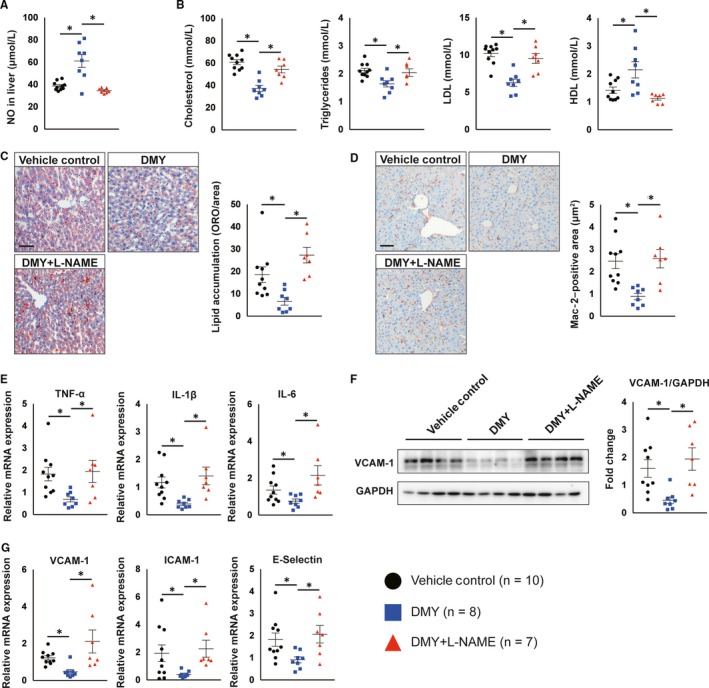FIGURE 2.

Dihydromyricetin (DMY) attenuates plasma lipid levels and hepatic endothelial activation and inflammation depending on nitric oxide (NO) production in Apoe− / − mice. A, ELISA analysis of NO levels in livers from vehicle control, DMY or DMY combined with L‐NAME–treated Apoe− / − mice fed with HFD for 12 wk. B, Circulating lipid levels (total cholesterol, triglycerides, LDL‐C, HDL) in HFD‐fed Apoe− / − mice treated with vehicle control, DMY or DMY combined with L‐NAME after 12 wk. C, Representative images and quantification show lipid accumulation in livers from vehicle control, DMY or DMY combined with L‐NAME–treated Apoe− / − mice fed with HFD for 12 wk. Scale: 100 μm. D, Representative images and quantification show Mac‐2–positive macrophages in livers. Scale: 100 μm. E, Real‐time qPCR analysis of indicated macrophage M1 markers in liver. The expression of genes was normalized to mouse β‐actin. F, Western blot analysis of VCAM‐1 expression in liver. G, Real‐time qPCR analysis of indicated endothelial cells activated markers in liver. The expression of genes was normalized to mouse β‐actin. Data shown are mean ± SEM (n = 7‐10 mice per group). *P < .05
